Rhinoplasty Goals by Ethnicity
Premier Houston Rhinoplasty Surgeon Dr. Michel Siegel
What Patients of Different Ethnic Backgrounds Want to Change About Their Noses
All people’s faces and noses are unique, but when they want to change the look of their nose, their goals are surprisingly consistent. That doesn’t make the job of a rhinoplasty surgeon any simpler, though: Because people’s ethnic backgrounds influence the shape, size, and other qualities of their noses, no two people have exactly the same “starting point.” That means your nose surgeon needs to take a slightly different path to where you want to go, depending on your starting point.
In other words, many details of your nose surgery depend on your ethnic background. (More on that in a moment.) That’s why it’s crucial to work with a surgeon who knows what people with backgrounds and noses similar to yours tend to need and want out of nose surgery, and who has the experience to execute on exactly what YOU need and want.
Regardless of your background, there are a few thing that are important to just about every patient:
- A natural look. People close to you will notice a difference (a good one), but to everyone else your nose will look like it’s always been the way it is.
- Minimal pain. An excellent nose surgeon can avoid packing and breaking the nose. You may feel as though you had a cold for a few days, but you won’t be in pain.
- Quick recovery. A skilled surgeon and a successful surgery mean you’ll wear an external splint for about 5 days.
- Minimal bruising and swelling. Once the splint comes off, no major swelling should be apparent, particularly if a preservation rhinoplasty was done. There is a very small amount of baseline swelling that typically lasts for a few months, which is natural, and that is part of the process that gives your nose its final form and definition.
- Being able to fly. It’s safe to travel on an airplane just 1 day after a rhinoplasty.
- Being able to exercise. You can resume light exercise 2 days after your rhinoplasty, and heavier exercise within about 4 weeks.
- Being able to swim. Most people aren’t avid swimmers, but they do want the option of swimming again at some point in their lives. They’re relieved to hear they can swim 7 days after rhinoplasty.
Those are the big concerns common to all kinds of patients. Now, here are the concerns and goals that are important to people of various backgrounds:
How Black & African American patients often want to change their noses:
Many Black patients want smaller nostrils, a more-refined tip, and a nasal bridge that is less flat. At the same time, they do not want a “Michael Jackson” nose: one that’s too small, too obviously worked on, and too white-looking. It needs to be balanced, and part of that means preserving a look that is true to their heritage.
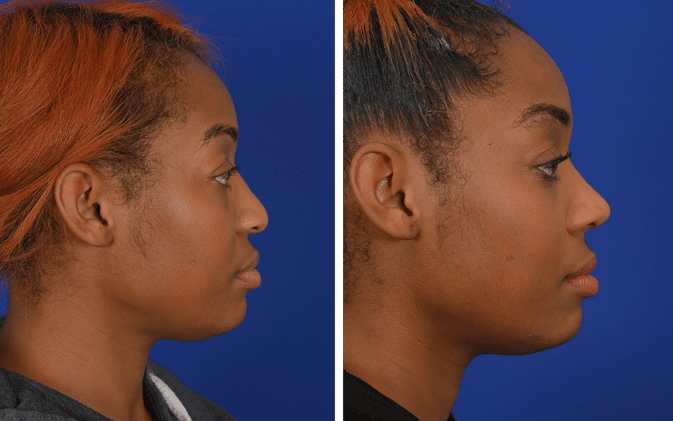
How Asian patients often want to change their noses:
Asian patients often want a higher and more defined nose bridge, narrower nostrils, and a tip that’s more refined and less bulbous. Their biggest concern overall tends to be achieving more definition, typically by making the tip of the nose less round and making the nostrils somewhat smaller.
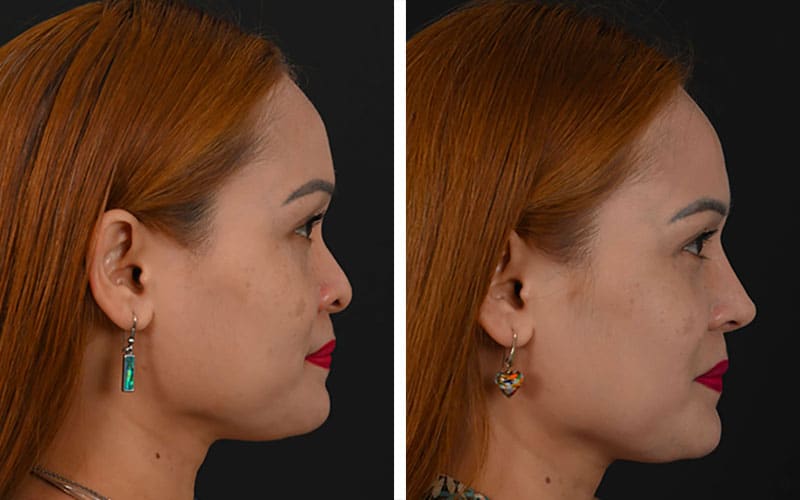
How Indian and Middle Eastern patients often want to change their noses:
Patients of Middle Eastern, Indian, descent typically would like to remove a hump and have a straighter (less sloping) bridge, and refine and lift a droopy tip. They want the tip lifted only slightly, so that it appears basically straight from the side, and not lifted UP. In the same way, they want to avoid a nose that appears too thin or pinched (with no nostril showing). In general, Indian and Middle Eastern patients want conservative changes and a light touch, so that nobody – even people in their community – can tell they had surgery.
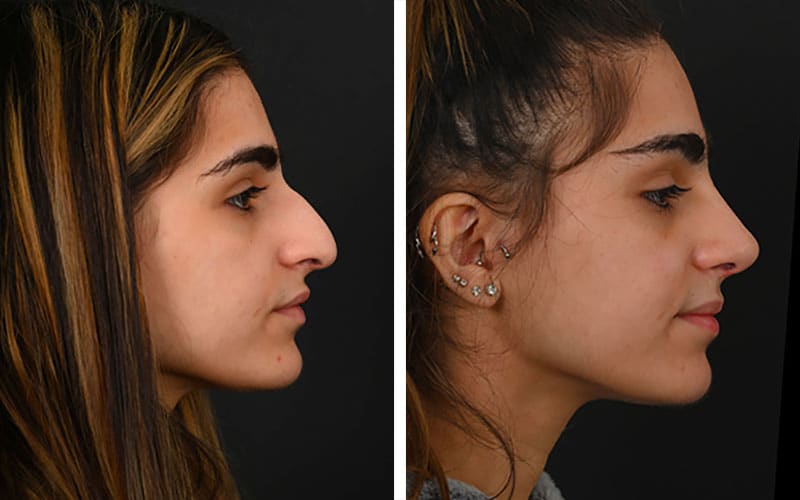
How Latino patients often want to change their noses:
Latin patients often have wider bones, weaker cartilage, and thicker skin, resulting in noses that appear flatter, wider, and shorter with minimal tip definition. Many Latino patients seek more sculpted noses with increased tip definition and a slimmer appearance from the front due to their anatomy. In cases where a hump is present, a slight concavity is also achieved to create a more feminine nose shape.
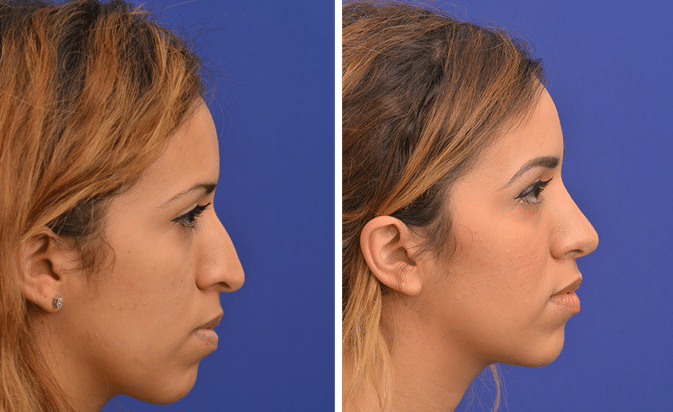
How White patients often want to change their noses:
Most patients of European descent do not want a hump (or they want less of one). They want a nose tip that’s more refined and lifted up. Usually, they also want to stop their noses from plunging or widening when they smile. All of that may or may not involve a reduction in the overall size of the nose, because the main goal tends to be reshaping. Like most, they are afraid of the “Michael Jackson nose” and all that comes with it.
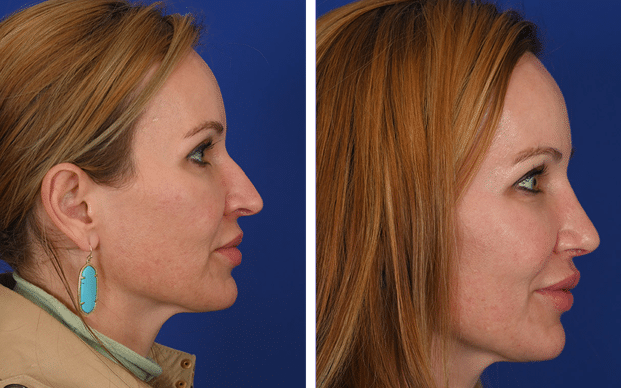
Complexities and complications in rhinoplasty for different ethnic groups
The tip of the nose is a reflection of the cartilage shape, size and quantity that make up the tip. In turn, the skin reflects the shape of the cartilage. Each patient has a unique combination of these 2 factors (cartilage and skin). Though each patient is unique and the surgery has to be individualized, certain generalizations can be made.
In general, patients of European descent tend to have ample cartilage and thinner skin on the tip. For that reason, a white patient tends to need a re-contouring rhinoplasty: the appropriate changes are made to the tip, and the skin is redrafted on top to show its new shape.
Black, Hispanic, and Asian patients generally have small and thin cartilage on the tip, thus difficult tip shapes, with thick skin covering them. For that reason, a rhinoplasty for these patients tends to require techniques that differ from those in a conventional rhinoplasty. New contours and more definition need to be created on top of the existing tip by using more cartilage. This allows the thick skin to re-drape and reflect the new shape of the cartilage. Furthermore, these patients may also have flatter-looking noses due to the relatively low height of the bridge. In a traditional rhinoplasty, which doesn’t always play out in an ideal way for non-white patients, the hump is lowered. In Asian, Black, and Hispanic patients, a more-defined bridge is created by also adding cartilage to the bridge, because a higher bridge on a nose creates a thinner bridge.
Many non-white patients also require or want nostril size to be reduced. Nostrils must be reshaped to achieve both balance and natural appearance with the rest of one’s facial features. Nostril reduction performed by a non-specialist in rhinoplasty may result in uneven nostrils, visible scars and triangular-looking nostrils.
Then there’s the issue of where to get the extra cartilage needed. The best cartilage for rhinoplasty is taken from inside the nose (the septum). When there is not enough of that to spare – which is a common challenge for Hispanic, Black, East Asian, Indian, and Middle Eastern patients – rib cartilage is used (often from a donor). The rib cartilage is sculpted (AKA grafted) to add contouring to the nose and to achieve the desired shape. As usual, here the experience of the rhinoplasty surgeon is critical to prevent complications. Improper sculpting or improper healing can result in bending of the different grafts, which can result in asymmetries.
Swelling also varies a little from patients of one ethnic group to the other. Swelling is limited to the skin, mainly the tip. The thickness of that skin will affect the amount of swelling and the speed of recovery. Black, Hispanic and Asian patients tend to have thicker skin around the tip, and should expect a little more swelling. The bad news is that small amount of swelling is unavoidable and a necessary part of the process, but the good news is that at the end of that process the shape of the new nose will be clear. Close follow-up with Dr. Siegel is important to remind patients that what they may see many months after surgery is not the final result.
Contact Dr. Siegel’s Houston office today to schedule a consultation
Patients of all ethnic backgrounds can get a nose that fits their face just right, if they find an experienced and exceptionally detail-oriented surgeon who is attuned to their needs and can give them a clear sense of what to expect along the way.
Note: Dr. Siegel specializes in preservation and ultrasonic rhinoplasty, both of which produce superior results. He is one of the few surgeons in the US experienced in these types of rhinoplasty. Find out more.

Why choose Dr. Michel Siegel for your rhinoplasty?
The success of your nose surgery depends above all on the nose surgeon you pick.
Rhinoplasty is not just another procedure offered by Dr. Siegel: It is his main focus. Dr. Siegel is a nose surgery specialist. He is double board certified by the only two boards certifying nose specialists (abohns.org and abfprs.org. Those certifications and his 20+ years of rhinoplasty experience, allow him to perform revision rhinoplasty to correct flaws in primary, secondary, and tertiary rhinoplasties.
More developments in rhinoplasty surgery have occurred in the last 15 years than in the previous 100. Your surgeon should be skilled in the best new techniques in nose surgery.
Dr. Siegel is one of the first surgeons in Texas and the country to be trained in Turkey, Europe, and Latin America in advanced surgical techniques for nose surgery. These techniques include ultrasonic rhinoplasty, which avoids breaking the bones as in traditional rhinoplasty, and preservation rhinoplasty, where the shape of the nose is changed by "preserving" the supportive structures of the nose with minimal bone and cartilage removal. This leads to faster healing and natural long-term outcomes in a shorter period.
Rhinoplasty is more than just a surgical procedure. It is a series of personal decisions, followed by a series of medical and aesthetic decisions. Dr. Siegel will work with you every step of the way. You will not be handed off to an assistant or a junior associate. We remain a small boutique practice providing not only exceptional surgical results and personalized care.
Find out even more about why to choose Dr. Siegel, or contact us to discuss your perfect look.
Houston’s Dr. Michel Siegel is one of the few surgeons in Houston and the US who specializes exclusively in nose and facial surgery. He also has significant experience with patients of all ethnic backgrounds, which matters if the goal is to attain a nose that looks just right on a unique person’s unique face, alongside other unique features.
He is also one of the relatively few nose surgeons experienced in both ultrasonic (AKA piezo) rhinoplasty and preservation rhinoplasty techniques, both of which can produce long-lasting results with less disruption, swelling, and bruising, and with a shorter recovery time.
Dr. Siegel’s decades of experience in nose surgery, combined with his aesthetic sense of balance, always shine through in a patient’s results. The results should not only be natural, but timeless. The nose should fit one’s face not only during the teenage years, but should also blend in with and develop alongside other facial features as a patient transitions from the teenage years to adulthood.
Dr. Siegel’s techniques afford the shortest-possible recovery, with no packing inside the nose (alleviating the pain associated with typical nose surgery), and minimal bruising due to his specialized technique.

